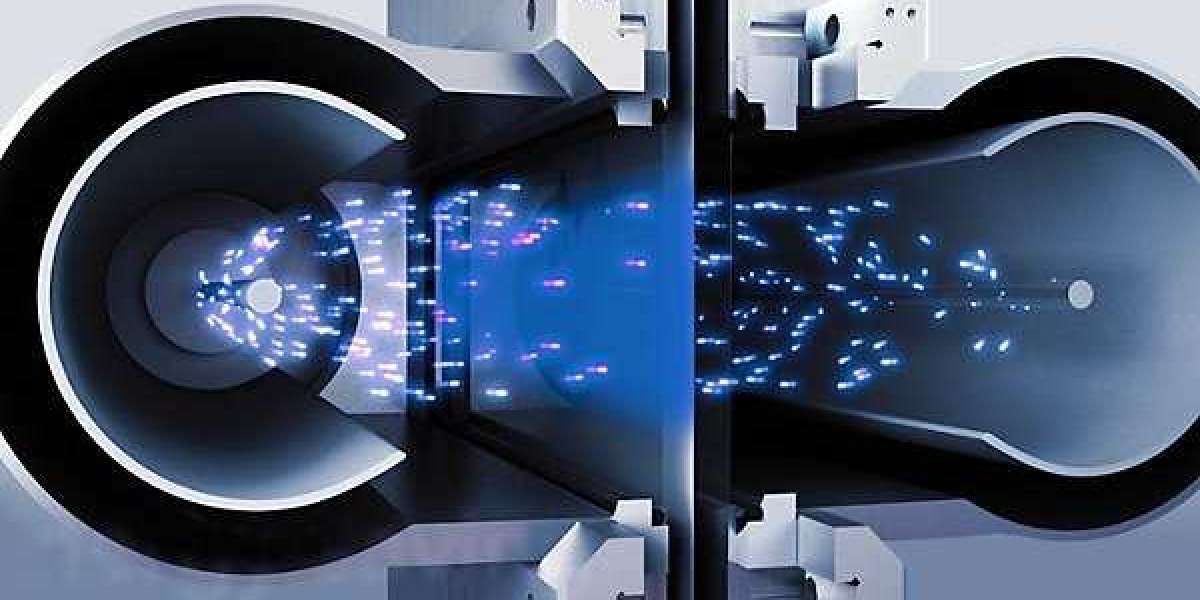Electron beam welder technology is reshaping the aerospace manufacturing industry by providing an unparalleled combination of precision, strength, and reliability in the production of critical components. From turbine blades and engine parts to structural elements and satellite components, the electron beam welder is at the forefront of advancing aerospace technologies. This post explores the impact of EBW on the aerospace industry, highlighting its key applications, advantages, and the innovations that are driving its adoption in this highly demanding sector.
What is an Electron Beam Welder?
An electron beam welder (EBW) uses a concentrated stream of high-energy electrons to weld materials together. The welding process occurs in a vacuum, which prevents oxidation and contamination, ensuring clean, high-quality welds. The focused energy of the electron beam allows for deep, narrow welds with minimal heat-affected zones, making it ideal for aerospace applications that require precision and reliability.
Key Applications of Electron Beam Welder in Aerospace Manufacturing
Turbine Engine Components
- Application: Electron beam welders are used extensively to join critical components in turbine engines, including turbine blades, combustion chambers, and nozzles.
- Benefit: EBW ensures the production of high-strength, durable welds that can withstand the extreme temperatures, pressures, and stresses encountered in jet engines, improving the efficiency and reliability of these components.
Aircraft Structural Parts
- Application: EBW is employed to weld lightweight structural components like fuselage parts, wing spars, and landing gear.
- Benefit: The precision and minimal heat-affected zone produced by EBW reduce material distortion, enabling the creation of strong, lightweight parts that are essential for optimizing the performance and fuel efficiency of aircraft.
Rocket Engine Components
- Application: Rocket engine parts, such as combustion chambers and rocket nozzles, require the strength and precision provided by EBW.
- Benefit: The high-strength welds created by electron beam welders ensure that rocket engines can withstand the extreme conditions of space launches and maintain structural integrity during flight.
Spacecraft and Satellite Parts
- Application: EBW is used to weld components for spacecraft, including satellite frames, antenna supports, and propulsion system parts.
- Benefit: The ability of EBW to create strong, clean welds in a vacuum makes it perfect for aerospace components that need to endure the harsh conditions of space, including extreme temperatures and radiation.
Advanced Aerospace Materials
- Application: EBW is ideal for welding advanced aerospace materials, such as titanium, high-strength steel, and nickel-based superalloys.
- Benefit: These materials, which are commonly used in aerospace for their high strength-to-weight ratio and resistance to heat, can be welded with high precision, ensuring the integrity and performance of components in demanding aerospace applications.
Advantages of Using Electron Beam Welder in Aerospace
Unmatched Precision and Control
Electron beam welders offer the highest level of precision in welding. The focused electron beam allows manufacturers to create deep, narrow welds with incredible control over the depth and width of the weld. This is essential in aerospace applications where even the smallest deviation can compromise the performance or safety of a component.High-Strength Welds
The welds produced by EBW are typically as strong as the base materials themselves, making them ideal for aerospace applications that demand the highest strength standards. EBW’s ability to create defect-free welds ensures that aerospace components can handle extreme stresses and conditions.Minimal Heat-Affected Zone (HAZ)
One of the key benefits of EBW is its ability to minimize the heat-affected zone, which reduces the risk of material distortion and maintains the mechanical properties of the surrounding material. In aerospace, where dimensional accuracy is critical, this feature is particularly valuable.Material Versatility
EBW can be used to weld a wide variety of aerospace materials, including high-performance alloys, composites, and titanium. This versatility makes it an essential tool for aerospace manufacturers who need to work with different materials depending on the application.Cleaner, Contamination-Free Welds
The vacuum environment of EBW eliminates the risk of oxidation and contamination, ensuring that the welds are clean and free of defects. This is particularly important in aerospace applications, where impurities in the weld can affect the performance and longevity of critical components.Reduced Material Waste
Electron beam welders are highly efficient and produce minimal material waste. The process focuses the heat precisely on the weld area, reducing the amount of material needed and helping manufacturers save on costs, especially when working with expensive aerospace materials.
Challenges of Using EBW in Aerospace Manufacturing
High Initial Costs
- Challenge: The cost of purchasing and setting up electron beam welders can be high, particularly for smaller aerospace manufacturers.
- Solution: Although the initial setup cost can be significant, the long-term benefits, such as improved weld quality, reduced material waste, and faster production times, often make EBW a cost-effective solution over time.
Skilled Labor Requirements
- Challenge: Operating an EBW system requires skilled technicians who can ensure the process is executed correctly.
- Solution: As EBW systems become more automated and AI-driven, the complexity of operating these systems is reduced, making the technology more accessible and easier to use for manufacturers.
Size Limitations
- Challenge: The size of components that can be welded using EBW is limited by the size of the vacuum chamber.
- Solution: Advances in portable EBW units and larger vacuum chambers are helping to overcome these limitations, enabling the welding of larger aerospace parts.
Innovations in EBW for Aerospace Manufacturing
AI and Machine Learning
AI and machine learning are being integrated into EBW systems to optimize welding parameters in real-time. This helps to improve the consistency of the welds and reduce errors, ensuring that aerospace components meet the highest standards of quality.Hybrid Manufacturing
Combining electron beam welding with additive manufacturing (3D printing) enables the production of near-net-shape aerospace components. This hybrid approach allows manufacturers to create complex geometries with minimal material waste while maintaining the strength and precision required in aerospace applications.Automation
The increased use of automation in EBW systems is helping to streamline the welding process, reduce human error, and improve efficiency. Fully automated EBW systems are becoming more common in aerospace manufacturing, allowing for faster production times and more consistent results.
The Future of EBW in Aerospace Manufacturing
Space Exploration
As space exploration becomes more advanced, the demand for precise, durable components for spacecraft and rockets will increase. Electron beam welders will play a critical role in producing the high-performance components needed for deep-space missions, satellite systems, and space stations.Sustainable Aerospace Manufacturing
The aerospace industry is placing greater emphasis on sustainability, and EBW's ability to reduce material waste and energy consumption aligns with these goals. As the industry moves toward greener manufacturing practices, EBW will continue to play a key role in minimizing the environmental impact of aerospace production.Customization for Aerospace Components
As the demand for customized aerospace components increases, the flexibility and precision of EBW will make it an ideal technology for producing bespoke parts. The ability to create parts that meet exact specifications will be essential as aerospace manufacturers focus on tailored solutions for specific applications.
Conclusion
The electron beam welder is a transformative tool in aerospace manufacturing, offering high precision, strength, and versatility that are essential for producing the next generation of aerospace components. Whether it's for turbine engines, spacecraft parts, or structural components, EBW is enabling aerospace manufacturers to meet the industry's rigorous standards. As innovations continue to enhance the capabilities of EBW, this technology will remain at the forefront of aerospace manufacturing, driving the development of safer, more efficient, and more sustainable aerospace systems.
To learn more about electron beam welder and its role in aerospace manufacturing, visit the linked guide. Discover how this cutting-edge technology is shaping the future of aerospace engineering and space exploration.








